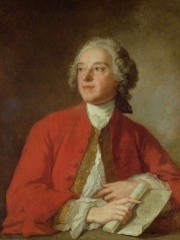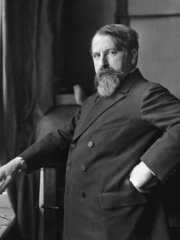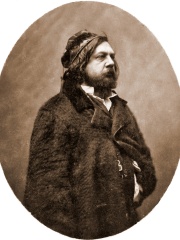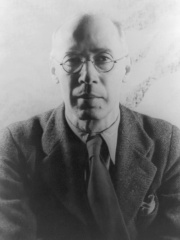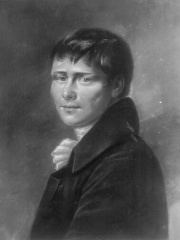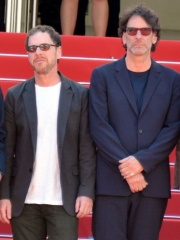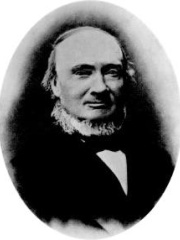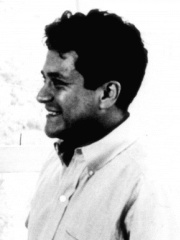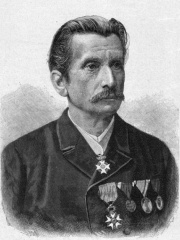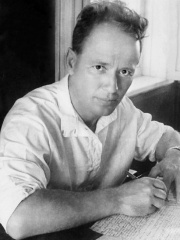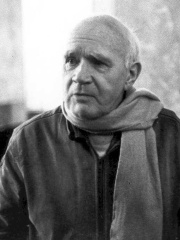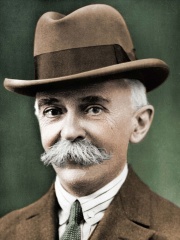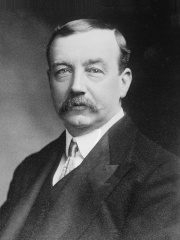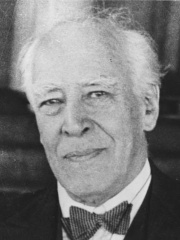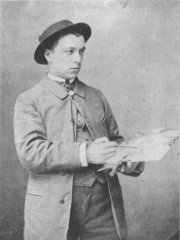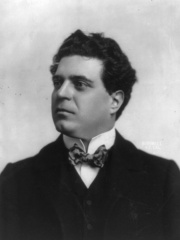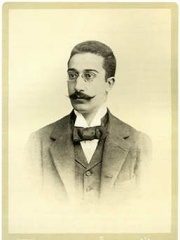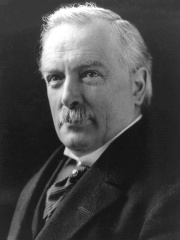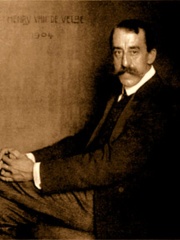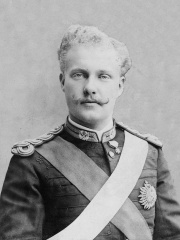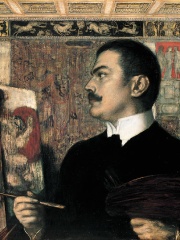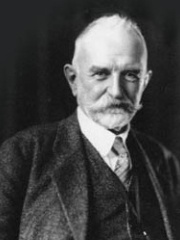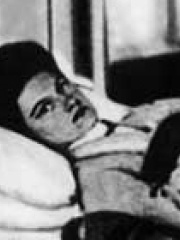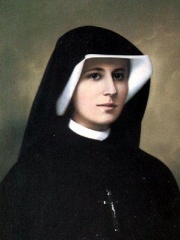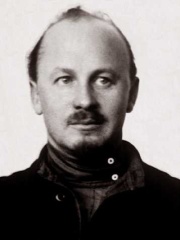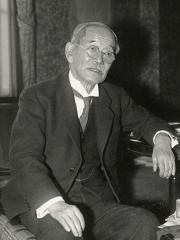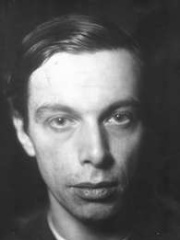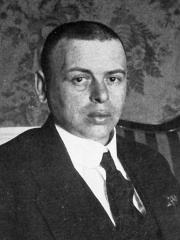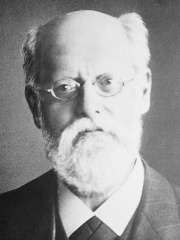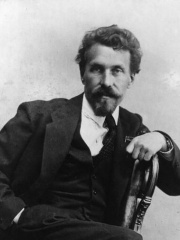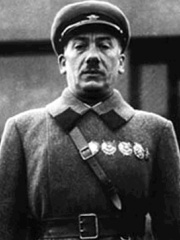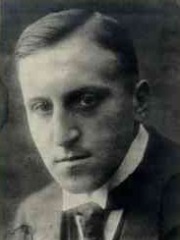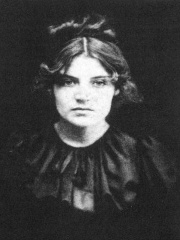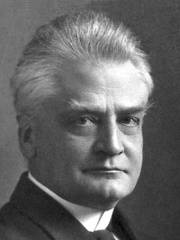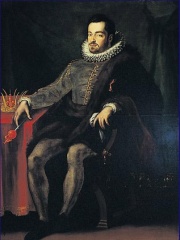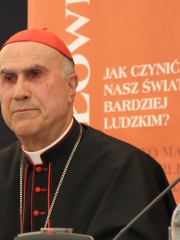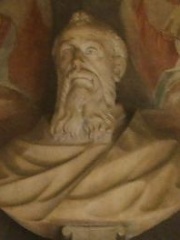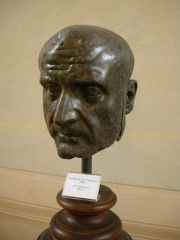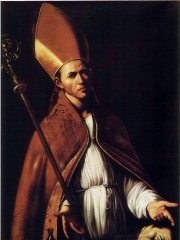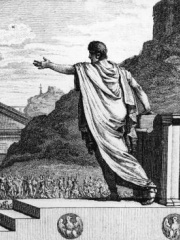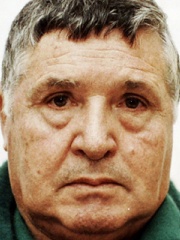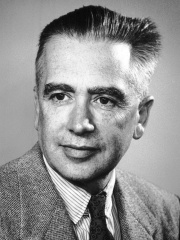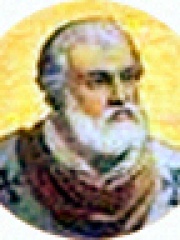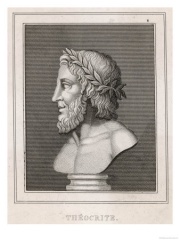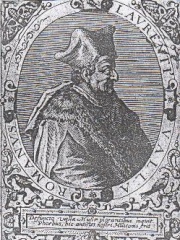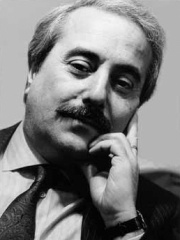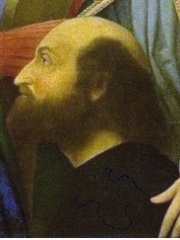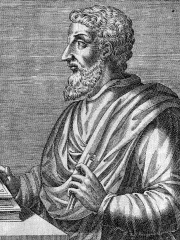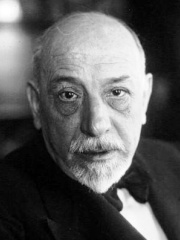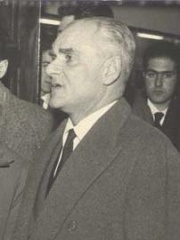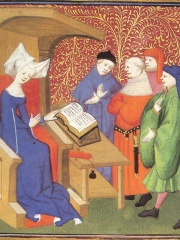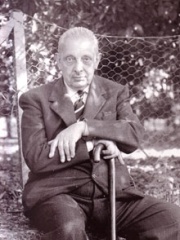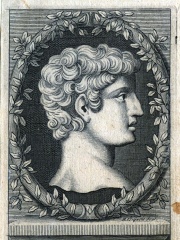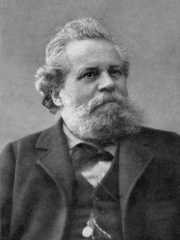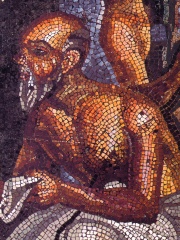WRITER
Gabriele D'Annunzio
1863 - 1938
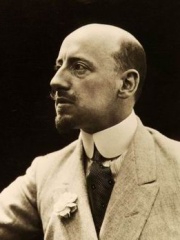
 Gabriele D'Annunzio
Gabriele D'Annunzio
General Gabriele D'Annunzio, Prince of Montenevoso (UK: , US: ; Italian: [ɡabriˈɛːle danˈnuntsjo]; 12 March 1863 – 1 March 1938), sometimes written d'Annunzio as he used to sign himself, was an Italian poet, playwright, orator, journalist, aristocrat, and Royal Italian Army officer during World War I. He occupied a prominent place in Italian literature from 1889 to 1910 and in its political life from 1914 to 1924. He had the epithets il Profeta (The Prophet) and il Vate (The Poet): vate stems from the Latin vates, meaning a prophetic, divinatory, or inspirational poet. D'Annunzio was associated with the Decadent movement in his literary works, which interplayed closely with French symbolism and British aestheticism. Such works represented a turn against the naturalism of the preceding romantics and was both sensuous and mystical. Read more on Wikipedia
His biography is available in 77 different languages on Wikipedia (up from 76 in 2024). Gabriele D'Annunzio is the 367th most popular writer (down from 306th in 2024), the 538th most popular biography from Italy (down from 404th in 2019) and the 29th most popular Italian Writer.
Gabriele D'Annunzio was an Italian poet, journalist, soldier, and politician. He was also the founder of the Italian literary movement called Decadentism.
Memorability Metrics
Page views of Gabriele D'Annunzio by language
Among WRITERS
Among writers, Gabriele D'Annunzio ranks 367 out of 7,302. Before him are Pierre Beaumarchais, Ivanka Trump, Arthur Schnitzler, Théophile Gautier, Henry Miller, and Heinrich von Kleist. After him are Coen brothers, Ivar Aasen, Carlos Castaneda, Leopold von Sacher-Masoch, Mikhail Sholokhov, and Jean Genet.
Most Popular Writers in Wikipedia
Go to all RankingsPierre Beaumarchais
1732 - 1799
HPI: 74.62
Rank: 361
Ivanka Trump
1981 - Present
HPI: 74.61
Rank: 362
Arthur Schnitzler
1862 - 1931
HPI: 74.59
Rank: 363
Théophile Gautier
1811 - 1872
HPI: 74.57
Rank: 364
Henry Miller
1891 - 1980
HPI: 74.54
Rank: 365
Heinrich von Kleist
1777 - 1811
HPI: 74.52
Rank: 366
Gabriele D'Annunzio
1863 - 1938
HPI: 74.51
Rank: 367
Coen brothers
HPI: 74.48
Rank: 368
Ivar Aasen
1813 - 1896
HPI: 74.48
Rank: 369
Carlos Castaneda
1925 - 1998
HPI: 74.47
Rank: 370
Leopold von Sacher-Masoch
1836 - 1895
HPI: 74.47
Rank: 371
Mikhail Sholokhov
1905 - 1984
HPI: 74.46
Rank: 372
Jean Genet
1910 - 1986
HPI: 74.46
Rank: 373
Contemporaries
Among people born in 1863, Gabriele D'Annunzio ranks 10. Before him are Pierre de Coubertin, Henry Ford, Arthur Henderson, Konstantin Stanislavski, Paul Signac, and Pietro Mascagni. After him are Constantine P. Cavafy, David Lloyd George, Henry van de Velde, Carlos I of Portugal, Franz Stuck, and George Herbert Mead. Among people deceased in 1938, Gabriele D'Annunzio ranks 16. Before him are Mary Mallon, Faustina Kowalska, Nikolai Bukharin, Kanō Jigorō, Ernst Ludwig Kirchner, and Béla Kun. After him are Karl Kautsky, Alexei Rykov, Genrikh Yagoda, Carl von Ossietzky, Suzanne Valadon, and Christian Lous Lange.
Others Born in 1863
Go to all RankingsPierre de Coubertin
BUSINESSPERSON
1863 - 1937
HPI: 82.65
Rank: 4
Henry Ford
INVENTOR
1863 - 1947
HPI: 82.33
Rank: 5
Arthur Henderson
POLITICIAN
1863 - 1935
HPI: 78.77
Rank: 6
Konstantin Stanislavski
FILM DIRECTOR
1863 - 1938
HPI: 76.93
Rank: 7
Paul Signac
PAINTER
1863 - 1935
HPI: 76.87
Rank: 8
Pietro Mascagni
COMPOSER
1863 - 1945
HPI: 75.30
Rank: 9
Gabriele D'Annunzio
WRITER
1863 - 1938
HPI: 74.51
Rank: 10
Constantine P. Cavafy
WRITER
1863 - 1933
HPI: 74.33
Rank: 11
David Lloyd George
POLITICIAN
1863 - 1945
HPI: 74.09
Rank: 12
Henry van de Velde
ARCHITECT
1863 - 1957
HPI: 73.41
Rank: 13
Carlos I of Portugal
POLITICIAN
1863 - 1908
HPI: 73.21
Rank: 14
Franz Stuck
PAINTER
1863 - 1928
HPI: 72.46
Rank: 15
George Herbert Mead
PHILOSOPHER
1863 - 1931
HPI: 72.41
Rank: 16
Others Deceased in 1938
Go to all RankingsMary Mallon
CELEBRITY
1869 - 1938
HPI: 76.08
Rank: 10
Faustina Kowalska
RELIGIOUS FIGURE
1905 - 1938
HPI: 75.76
Rank: 11
Nikolai Bukharin
POLITICIAN
1888 - 1938
HPI: 75.51
Rank: 12
Kanō Jigorō
MARTIAL ARTS
1860 - 1938
HPI: 75.46
Rank: 13
Ernst Ludwig Kirchner
PAINTER
1880 - 1938
HPI: 75.30
Rank: 14
Béla Kun
POLITICIAN
1886 - 1938
HPI: 75.24
Rank: 15
Gabriele D'Annunzio
WRITER
1863 - 1938
HPI: 74.51
Rank: 16
Karl Kautsky
PHILOSOPHER
1854 - 1938
HPI: 74.17
Rank: 17
Alexei Rykov
POLITICIAN
1881 - 1938
HPI: 73.82
Rank: 18
Genrikh Yagoda
POLITICIAN
1891 - 1938
HPI: 72.59
Rank: 19
Carl von Ossietzky
SOCIAL ACTIVIST
1889 - 1938
HPI: 72.58
Rank: 20
Suzanne Valadon
PAINTER
1865 - 1938
HPI: 72.39
Rank: 21
Christian Lous Lange
POLITICAL SCIENTIST
1869 - 1938
HPI: 72.38
Rank: 22
In Italy
Among people born in Italy, Gabriele D'Annunzio ranks 538 out of 5,161. Before him are Ferdinando I de' Medici, Grand Duke of Tuscany (1549), Tarcisio Bertone (1934), Peter Damian (1007), Trebonianus Gallus (206), Januarius (272), and Gaius Gracchus (-154). After him are Salvatore Riina (1930), Emilio Segrè (1905), Pope Agapetus II (900), Theocritus (-315), Lorenzo Valla (1407), and Giovanni Falcone (1939).
Others born in Italy
Go to all RankingsFerdinando I de' Medici, Grand Duke of Tuscany
NOBLEMAN
1549 - 1609
HPI: 74.55
Rank: 532
Tarcisio Bertone
RELIGIOUS FIGURE
1934 - Present
HPI: 74.55
Rank: 533
Peter Damian
PHYSICIAN
1007 - 1072
HPI: 74.53
Rank: 534
Trebonianus Gallus
POLITICIAN
206 - 253
HPI: 74.53
Rank: 535
Januarius
RELIGIOUS FIGURE
272 - 305
HPI: 74.51
Rank: 536
Gaius Gracchus
POLITICIAN
154 BC - 121 BC
HPI: 74.51
Rank: 537
Gabriele D'Annunzio
WRITER
1863 - 1938
HPI: 74.51
Rank: 538
Salvatore Riina
MAFIOSO
1930 - 2017
HPI: 74.49
Rank: 539
Emilio Segrè
PHYSICIST
1905 - 1989
HPI: 74.45
Rank: 540
Pope Agapetus II
RELIGIOUS FIGURE
900 - 955
HPI: 74.45
Rank: 541
Theocritus
WRITER
315 BC - 260 BC
HPI: 74.44
Rank: 542
Lorenzo Valla
WRITER
1407 - 1457
HPI: 74.42
Rank: 543
Giovanni Falcone
JUDGE
1939 - 1992
HPI: 74.41
Rank: 544
Among WRITERS In Italy
Among writers born in Italy, Gabriele D'Annunzio ranks 29. Before him are Ludovico Ariosto (1474), Marcus Terentius Varro (-116), Luigi Pirandello (1867), Alberto Moravia (1907), Christine de Pizan (1365), and Giuseppe Tomasi di Lampedusa (1896). After him are Theocritus (-315), Lorenzo Valla (1407), Cornelius Nepos (-100), Elena Ferrante (1943), Giosuè Carducci (1835), and Livius Andronicus (-280).
Ludovico Ariosto
1474 - 1533
HPI: 76.15
Rank: 23
Marcus Terentius Varro
116 BC - 27 BC
HPI: 76.15
Rank: 24
Luigi Pirandello
1867 - 1936
HPI: 75.95
Rank: 25
Alberto Moravia
1907 - 1990
HPI: 75.73
Rank: 26
Christine de Pizan
1365 - 1430
HPI: 75.10
Rank: 27
Giuseppe Tomasi di Lampedusa
1896 - 1957
HPI: 74.75
Rank: 28
Gabriele D'Annunzio
1863 - 1938
HPI: 74.51
Rank: 29
Theocritus
315 BC - 260 BC
HPI: 74.44
Rank: 30
Lorenzo Valla
1407 - 1457
HPI: 74.42
Rank: 31
Cornelius Nepos
100 BC - 25 BC
HPI: 74.23
Rank: 32
Elena Ferrante
1943 - Present
HPI: 74.21
Rank: 33
Giosuè Carducci
1835 - 1907
HPI: 74.14
Rank: 34
Livius Andronicus
280 BC - 200 BC
HPI: 73.96
Rank: 35
